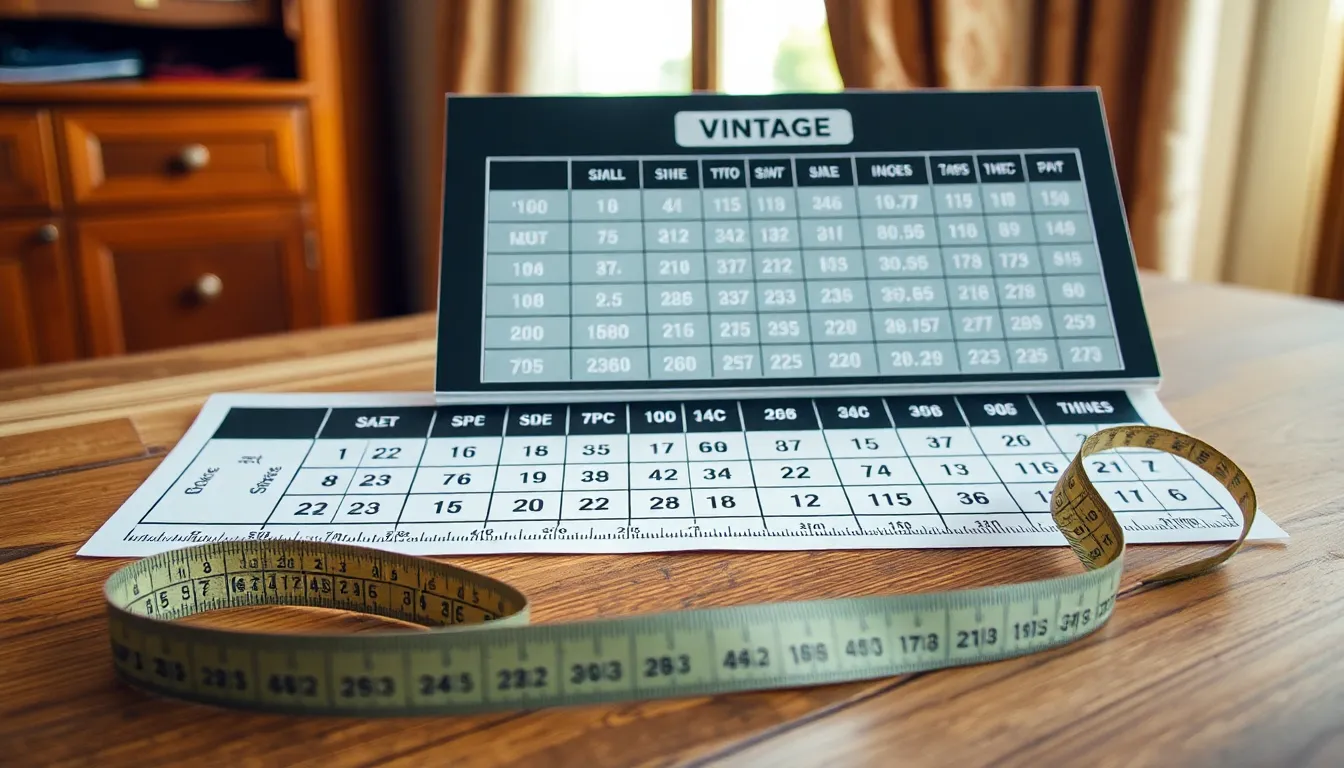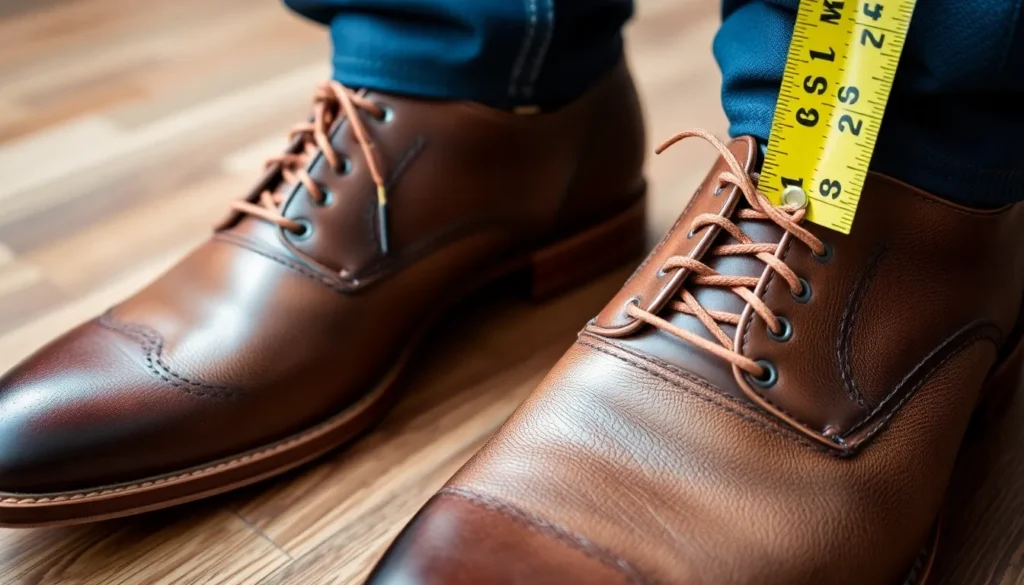When it comes to shoe shopping, knowing your size can feel like deciphering a secret code. If you’ve ever wondered what size 43 in men’s shoes actually means, you’re not alone. It’s like trying to figure out a puzzle where the pieces keep changing shape. But fear not, because this guide is here to help you step confidently into the world of footwear without tripping over confusing size charts.
Table of Contents
ToggleUnderstanding Shoe Sizes
Accurate shoe sizing eases the shopping experience and promotes comfort. For many, recognizing the right size prevents discomfort and helps avoid returns.
The Importance of Accurate Sizing
Accuracy in shoe sizing remains crucial for fit and comfort. Wearing the wrong size often leads to discomfort, foot pain, or even injuries. It’s essential to measure feet properly when shopping for shoes. Missteps in size can result in spending money on shoes that won’t be worn. Knowing one’s size helps ensure a good fit, leading to better performance, especially for athletic footwear. Clarity in sizes contributes to overall satisfaction with purchase decisions.
Different International Shoe Size Systems
Numerous international shoe size systems exist, causing confusion for shoppers. The US, UK, and European systems, for example, differ in their measurements. A size 43 in Europe typically translates to a size 9 in the US. Variations in size charts also occur among brands. Understanding these differences enhances the online shopping experience. Shoppers should consult size conversion charts to find the most accurate fit. Accurate conversion acts as a guide to navigate these varying systems confidently.
Converting Size 43 to US Sizes

Size 43 in men’s shoes often leads to questions about its equivalent in US sizing. This conversion isn’t always straightforward, and understanding the measurements helps simplify the shoe shopping experience.
Size 43 in Inches and Centimeters
A size 43 typically measures around 10.63 inches or 27 centimeters. This sizing reflects the length of the foot, which is crucial for ensuring a proper fit. Accurate measurements in both inches and centimeters are vital when selecting shoes, as even minor differences can affect comfort.
Comparison with Other Standard Sizes
In the context of international shoe sizing, size 43 relates closely to a US men’s size 9. Additionally, it may align with a UK men’s size 8.5. Recognizing these conversions is essential for making informed choices when purchasing footwear. Familiarity with size charts leads to better shoe selections, reducing the risk of discomfort.
Common Mistakes in Sizing
Understanding shoe sizes can lead to common mistakes, particularly with size labels. Misinterpretations often occur when consumers assume that all brands adhere to standardized sizing. He’ll find that European sizes, like 43, might translate differently depending on the manufacturer. Individuals may also overlook the fact that width sizes can vary significantly, impacting comfort.
Trying shoes on remains crucial for selecting the right fit. She should always take the opportunity to walk around in the shoes to assess the fit accurately. Sizing charts provide general guidelines, but variations exist between different styles and brands. Ultimately, trying on different pairs ensures individuals choose footwear that feels right and reduces the risk of potential discomfort or injury.
Factors Affecting Shoe Fit
Several elements influence how shoes fit, making it essential to understand these factors for a comfortable experience.
Brand Variations in Sizing
Brand differences significantly affect shoe sizing. Various manufacturers employ unique sizing systems, leading to inconsistencies even within the same size label. A size 43 in one brand may feel like a size 42 or size 44 in another. Consumers often face challenges when switching brands due to discrepancies in fit. It’s crucial to reference size charts provided by each brand and consult customer reviews for insights on fit. Trying on shoes from multiple brands remains the best approach to determine the ideal fit.
Shoe Types and Their Fit
Shoe types also play a significant role in how well footwear fits. Athletic shoes often feature a snug fit for stability during movement, while casual shoes may offer a looser, more relaxed feel. Formal shoes typically emphasize aesthetics over comfort, which can influence fit perception. Different styles also accommodate various foot shapes; for example, some designs offer wider options. Narrow or wide feet require careful selection in shoe types to ensure comfort. Prioritizing the right type helps prevent discomfort and enhances satisfaction with the purchase.
Navigating shoe sizes can be tricky but knowing that a size 43 in men’s shoes typically equates to a US size 9 can simplify the process. Understanding these conversions helps ensure a comfortable fit and enhances the overall shopping experience.
It’s crucial to remember that sizing can vary by brand and style. Trying on shoes and being aware of width options can make a significant difference in comfort. By measuring feet accurately and consulting size charts, individuals can avoid common pitfalls and select footwear that meets their needs effectively.
With this knowledge in hand, shoppers can approach their next shoe purchase with confidence.





